Food Loss Related News
Food Loss Related Publications

Food loss analysis: causes and solutions - Case study on the chickpea value chain in the Republic of India
01/09/2018
To improve global, regional and local knowledge about the underlying reasons for food loss, as well as to assess where critical loss points occur, FAO undertook a series of case studies involving numerous food supply chains in developing countries. Utilizing a defined food loss and waste analysis framework.
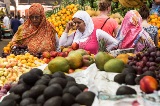
Food loss analysis: causes and solutions - Case study on the mango value chain in the Republic of India
01/09/2018
To improve global, regional and local knowledge about the underlying reasons for food loss, as well as to assess where critical loss points occur, FAO undertook a series of case studies involving numerous food supply chains in developing countries. Utilizing a defined food loss and waste analysis framework.
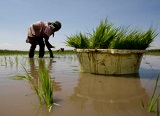
Food loss analysis: causes and solutions - Case study on the rice value chain in the Republic of India
01/09/2018
To improve global, regional and local knowledge about the underlying reasons for food loss, as well as to assess where critical loss points occur, FAO undertook a series of case studies involving numerous food supply chains in developing countries. Utilizing a defined food loss and waste analysis framework.
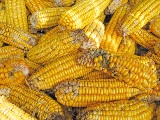
Food loss analysis: causes and solutions - Case study on the maize value chain in the Democratic Republic of Timor-Leste
01/09/2018
To improve global, regional and local knowledge about the underlying reasons for food loss, as well as to assess where critical loss points occur, FAO undertook a series of case studies involving numerous food supply chains in developing countries. Utilizing a defined food loss and waste analysis framework.
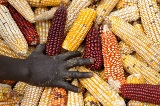
Food loss analysis: causes and solutions - Case study on the maize value chain in the Republic of Malawi | Factsheet
01/09/2018
To improve global, regional and local knowledge about the underlying reasons for food loss, as well as to assess where critical loss points occur, FAO undertook a series of case studies involving numerous food supply chains in developing countries. Utilizing a defined food loss and waste analysis framework.

Food loss analysis: causes and solutions - Case study on the maize value chain in the Republic of Malawi
01/09/2018
To improve global, regional and local knowledge about the underlying reasons for food loss, as well as to assess where critical loss points occur, FAO undertook a series of case studies involving numerous food supply chains in developing countries. Utilizing a defined food loss and waste analysis framework.
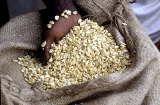
Food loss analysis: causes and solutions - Case study on the maize value chain in the Federal Democratic Republic of Ethiopia
01/09/2018
To improve global, regional and local knowledge about the underlying reasons for food loss, as well as to assess where critical loss points occur, FAO undertook a series of case studies involving numerous food supply chains in developing countries. Utilizing a defined food loss and waste analysis framework.

Food loss analysis: causes and solutions - Case study on the teff value chain in the Federal Democratic Republic of Ethiopia
01/09/2018
To improve global, regional and local knowledge about the underlying reasons for food loss, as well as to assess where critical loss points occur, FAO undertook a series of case studies involving numerous food supply chains in developing countries. Utilizing a defined food loss and waste analysis framework.

Food loss analysis: causes and solutions - Case study on the rice value chain in the Democratic Republic of Timor-Leste
01/09/2018
To improve global, regional and local knowledge about the underlying reasons for food loss, as well as to assess where critical loss points occur, FAO undertook a series of case studies involving numerous food supply chains in developing countries. Utilizing a defined food loss and waste analysis framework.
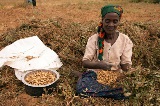
Food loss analysis: causes and solutions - Case study on the groundnut value chain in the Republic of Malawi | Factsheet
01/09/2018
To improve global, regional and local knowledge about the underlying reasons for food loss, as well as to assess where critical loss points occur, FAO undertook a series of case studies involving numerous food supply chains in developing countries. Utilizing a defined food loss and waste analysis framework.

Food loss analysis: causes and solutions - Case study on the maize value chain in the Federal Democratic Republic of Ethiopia | Factsheet
01/09/2018
To improve global, regional and local knowledge about the underlying reasons for food loss, as well as to assess where critical loss points occur, FAO undertook a series of case studies involving numerous food supply chains in developing countries. Utilizing a defined food loss and waste analysis framework.

Food loss analysis: causes and solutions - Case study on the groundnut value chain in the Republic of Malawi
01/09/2018
To improve global, regional and local knowledge about the underlying reasons for food loss, as well as to assess where critical loss points occur, FAO undertook a series of case studies involving numerous food supply chains in developing countries. Utilizing a defined food loss and waste analysis framework.

Gender and food loss in sustainable food value chains. A guiding note
01/07/2018
This publication aims to help policy-makers, project designers and field practitioners to conceptualize the nexus between gender equality and food loss while offering practical guidance on and tools for integrating gender concerns into the planning and implementation of food loss studies and reduction strategies and interventions.
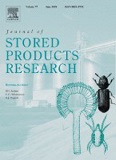
On-farm comparison of different postharvest storage technologies in a maize farming system of Tanzania Central Corridor
15/06/2018
On-farm comparison of different postharvest storage technologies in a maize farming system of Tanzania Central Corridor. In Journal of Stored Products Research Volume 77, June 2018, Pages 55–65.
.tmb-th600x450.jpg?Culture=en&sfvrsn=f93a183d_1)
In-farm comparison trial conducted by HELVETAS-GPLP in partnership with IITA Tanzania
01/06/2018
This article explains: moisture of maize grains increased during 30-week storage in hermetic conditions; sitophilus zeamais was more predominant than Tribolium castaneum in stored maize; hermetic storage containers controlled grain damage as good as insecticide; kernel breakage before storage may accelerate insect damage during storage; no risk of low germination; etc.
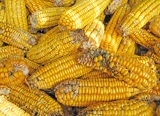
Effectiveness of Improved Hermetic Storage Structures Against Maize Storage Insect Pests Sitophilus zeamais and Prostephanus truncatus
19/05/2018
A study was conducted for 12 months to evaluate the effectiveness of two improved hermetic storage structures against two maize storage pests Sitophilus zeamais; Prostephanus truncatus at Liwufu Research Station, Malawi. The storages were metal silo and hermetic bag; Actellic super dust was included as a control.

Food loss analysis: causes and solutions. Case study on the cassava value chain in the Republic of Guyana
01/05/2018
An in-depth analysis of post-harvest handling practices of cassava producers, retailers (roadside and mobile market vendors, municipal markets, super-markets), wholesalers, exporters, processors for development of value-added products and consumers, to obtain a more complete understanding of the system-wide nature of quality deterioration and subsequent losses.

Bellagio Statement on Postharvest Management
26/03/2018
The Bellagio Statement is first and foremost a collective commitment to collaborate and scale- up effective actions. It is also a call for large-scale, sustained, coordinated and mutually sup- portive actions from all stakeholders across agri-food systems, including farmers, aggregators, traders, retailers, PHM technology and service providers, financial institutions, governments, etc.

Low cost, high impact solutions for improving the quality and shelf-life of snap beans in local markets
28/02/2018
Snap beans (Phaseolus vulgaris L.) are among the most important vegetables produced in SAARC countries. They are mainly grown by smallholders and are marketed domestically. As a vegetable, snap beans are high in protein and soluble fiber and low in calories.

Low cost, high impact solutions for improving the quality and shelf-life of tomatoes in local markets
28/02/2018
The winter tomato (Lycopersicon esculentum Mill.) is one of the most popular vegetables produced in SAARC countries. It is grown during the winter season under protected cultivation using nets to protect fruit from bird infestation. Winter tomatoes are cultivated by small holders and are sold on the domestic market. They are consumed in the fresh form or are used as ingredients in many cooked dishes.
